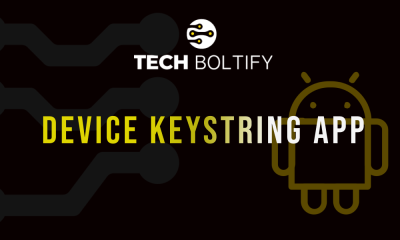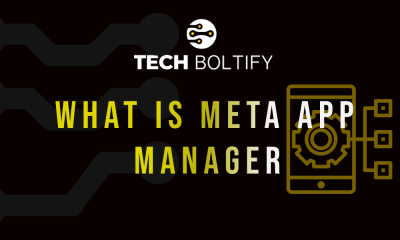Tech
High-Speed Internet Service Provider HQPotner
Are you prepared to embrace a revolutionary technology poised to revolutionize your workflow and collaboration experience? If you’ve been curious about this amazing internet service provider and how it can elevate your productivity, you’re in the right spot.
Join us as we explore the dynamic world of HQPotner, exploring its key features, benefits, and final thoughts that will surely pique your interest. Get ready for an exhilarating journey ahead!
Introducing HQPotner
It stands as a comprehensive digital workspace and collaboration platform meticulously crafted to empower individuals and teams, facilitating them in reaching their peak performance. Serving as a centralized hub for all work-related endeavors, it streamlines professional operations, fostering efficiency and seamlessness in your professional endeavors.
Highlighted Features of Internet Service
Comprehensive Centralization: At the core of the internet service provider lies its exceptional features, serving as a one-stop hub catering to diverse business needs. Whether it’s managing accounts payable, receivable, payroll, or inventory administration, it consolidates all operations into a single, user-friendly platform. No more toggling between different apps or chasing scattered spreadsheets!
Streamlined Automation: Bid farewell to mundane tasks! It automates labor-intensive operations such as invoicing, bill payments, and expense management. This liberates valuable time, allowing you to focus on strategic aspects of your organization.
Real-time Insights: Access vital financial data swiftly with it’s robust reporting and analytics tools. Generate comprehensive reports, monitor key performance indicators (KPIs), and make informed decisions based on real-time data.
Robust Security Measures: Rest assured knowing that your financial data is well-protected. It employs industry-leading security protocols, including data encryption and access restrictions, to safeguard your sensitive information.
Scalability and Versatility:It caters to businesses of all sizes, from burgeoning startups to established corporations. Its modular design allows you to select the functionalities you require at present and effortlessly scale as your organization grows.
Unified Workspace: Say farewell to the chaos of managing multiple applications and tabs. It seamlessly integrates all your apps, data, and communication tools into a unified workspace, streamlining your workflow.
Advanced Search Capability: Effortlessly locate any item within your workspace with its advanced search functionality. No more tedious scrolling or manual directory searches.
Seamless Integration: Enhance your productivity by effortlessly connecting it with popular tools and programs. Enjoy the convenience of synchronized workflows and streamlined operations.
Benefits of HQPotner
Enhanced Efficiency: It streamlines operations by automating time-consuming tasks and optimizing workflows. This translates to increased operational efficiency, saving time, reducing errors, and fostering a more organized financial team.
Improved Cash Flow Management: Gain real-time visibility into your finances with service provider, enabling informed decision-making regarding spending and investment. This facilitates better cash flow management and enhances overall profitability.
Heightened Accuracy: Bid farewell to manual data entry errors. Its automation ensures heightened accuracy in financial records, leading to better decision-making and reduced risk.
Empowered Team: It empowers your entire financial team with its user-friendly features and intuitive interfaces. By providing easy access to essential information, it fosters collaboration and transparency among team members.
Data-Driven Decision Making: Leverage its advanced reporting and analytics capabilities to gain valuable insights into your financial performance. With data-driven strategies, you can make informed decisions and optimize business operations effectively.
Minimized Distractions: Smart notifications offered by internet service providers ensure that you stay focused on your priorities, minimizing distractions and maximizing productivity.
Seamless Collaboration: Enjoy real-time collaboration features that simplify teamwork and enhance productivity.
Time Efficiency: With this internet service provider, spend less time searching for files and navigating through cluttered systems, and more time on productive tasks.
Robust Data Security: Rest assured knowing that your information is safeguarded using sophisticated security measures implemented by service providers.
Actionable Analytics: Gain valuable insights into your work patterns and areas for improvement with its insightful analytics, enabling you to optimize your workflow effectively.
How to sign up for Hqpotner
- Visit its website and click “Sign Up”
- Enter personal information: name, address, phone number
- Select a service plan
- Choose the installation date and time
- The technician installs an internet connection
- Verify all equipment is set up correctly
- Test internet speed after installation
The Different Plans offered by Potner
It offers a range of plans tailored to diverse user needs, each with varying speeds and data allowances:
- Basic Plan: Ideal for light internet users, providing up to 10 Mbps download speed and 50 GB monthly data allowance.
- Mid-tier Plan: Suited for moderate users, offering up to 25 Mbps download speed and 150 GB monthly data allowance.
- Premium Plan: Designed for heavy internet users, delivering up to 100 Mbps download speed with unlimited monthly data.
Note- All plans include free installation, equipment rental, and access to its customer service center. Users can also customize their plans with optional features like Wi-Fi hotspot access or additional email accounts for an additional fee.
Whether you require minimal or extensive internet usage,it ensures affordability and reliability with plans designed to meet your specific requirements, backed by exceptional customer support.
FAQs
Q1: What is Potner Exactly?
A: It is akin to having a personal assistant tailored to your needs, seamlessly integrating with all devices and platforms. It represents a revolutionary technological approach, merging advanced computing, artificial intelligence, and user-friendly design to simplify and enhance your digital life.
Q2: Who Developed Potner and Why?
A: It emerged from a collective of tech enthusiasts and forward-thinkers who identified a disparity between current technology usage and its potential. Their aim was to create more than just another gadget or app but rather a comprehensive solution that elevates daily interactions with technology.
Q3: Is HQPotner User-Friendly and Accessible to All?
A: Absolutely! Central to design philosophy is its user-centric approach. Whether you’re a tech-savvy individual or someone navigating basic digital tasks, Potner is intuitively crafted to accommodate users of all levels with ease and efficiency.
Q4: How Does HQPotner Ensure Data Privacy and Security?
A: It prioritizes your privacy and security by implementing cutting-edge encryption and cybersecurity measures. While leveraging your data to enhance your experience, it maintains stringent safeguards to uphold the confidentiality of your information.
Q5: Is Potner Environmentally Conscious?
A: Absolutely! Its creators are dedicated to sustainability, integrating eco-friendly technologies and practices into its development process. This ensures that our present technology usage doesn’t compromise the well-being of our planet in the future.
Q6: How Does HQPotner Integrate with Existing Technology?
A: It serves as a seamless intermediary, effortlessly connecting with a diverse array of devices and platforms, including smartphones, laptops, and smart home devices. Its integration is user-friendly and requires no technical expertise from the user.
Q7: What Sets HQPotner Apart from Other Tech Products?
A: It distinguishes itself through its adaptability, user-centric design, and commitment to continuous enhancement based on community feedback. It transcends being a mere product, evolving into a dynamic ecosystem that grows alongside its users’ evolving needs.
Q8: Is HQPotner Suitable for Professional Use?
A: Absolutely. It is well-suited for professional environments. Its capacity to streamline processes, boost productivity, and facilitate collaboration renders it a valuable tool in any workplace.
Q9: Are There Any Ongoing Costs Associated with HQPotner?
A: Its basic features incur no ongoing costs. However, premium features or services may be available through subscription, tailored to your specific requirements.
Q10: How Do I Begin Using HQPotner?
A: Getting started is a breeze. Simply visit HQ website, register, and follow the straightforward setup instructions. Should you encounter any hurdles, our friendly customer support team stands ready to assist you.
Tech
Why Cheap Residential Proxies Are a Game-Changer in 2025
Web scraping has always been a cat-and-mouse game – but in 2025, the stakes are higher than ever. Websites are no longer just blocking known datacenter IPs. They’re fingerprinting traffic, measuring behavioral signals, and using machine learning to detect non-human patterns.
If you’re still brute-forcing requests with the same old proxy lists, you’re probably hitting more CAPTCHA walls than clean data.
That’s why smart developers and data teams are taking a different approach: they’re switching to residential proxies – and specifically, to rotating residential IPs that are now widely available at budget-friendly prices.
In short: the game has changed, and the new advantage is going to those who scrape smarter – not harder.
Why Traditional Proxies Fall Short in 2025
A few years ago, datacenter proxies were the go-to option. They were fast, easy to scale, and cheap. But now they’re also highly detectable.
Modern bot defenses like Cloudflare, Kasada, and DataDome flag datacenter IPs instantly. Even if your script is well-written, using a flagged or repetitive IP will tank your success rate.
Some of the biggest challenges with outdated proxy setups include:
- IP bans after just a few requests
- CAPTCHAs on nearly every session
- Blocked access to login flows, pricing pages, or reviews
- Geo-restrictions that prevent you from viewing real content
These are no longer edge cases – they’re the norm for anyone scraping without a modern proxy layer.
What Makes Residential Proxies Different?
Residential proxies route your requests through real IP addresses assigned by internet service providers to actual users. That means every request looks like it’s coming from a real device – not a bot or a server rack.
Even better, rotating residential proxies automatically change IPs at set intervals or per request, simulating natural browsing patterns and distributing your traffic across a large, trusted IP pool.
This makes it harder for platforms to identify scraping behavior, and significantly reduces the risk of getting blocked – even on high-security sites.
The Power of Affordability
In the past, residential proxies were reserved for enterprise teams or deep-pocketed scraping ops. Monthly plans could cost hundreds (or even thousands) of dollars for consistent performance.
But thanks to broader adoption and more efficient infrastructure, that’s no longer the case.
You can now get cheap residential proxies with:
- Automatic IP rotation
- Geo-targeting by country or city
- Support for HTTPS and SOCKS5 protocols
- Flexible usage-based billing (by GB, request, or session)
- Easy integration into tools like Puppeteer, Playwright, or Scrapy
Some providers even offer free trials or low-cost plans under $30/month – making it possible for solo developers, freelancers, and startups to scale their projects without taking on unnecessary risk.
Who’s Winning with Smart Scraping in 2025?
- 1. E-commerce Analysts: Scraping product data, pricing trends, and availability from global markets without triggering rate limits.
- 2. SEO Professionals: Tracking SERPs and local search results from different cities, without being forced to use Google’s API.
- 3. Marketplaces & Aggregators: Monitoring inventory, listings, and seller data across multiple platforms in real time.
- 4. Travel Tech & Fintech: Collecting real-time pricing, availability, and user-facing metrics for fares, flights, or product offers.
- 5. Competitor Intelligence Teams: Analyzing pricing, content changes, and UGC (like reviews) at scale – without detection.
Across the board, rotating residential proxies help users access public data at scale, maintain consistency across scraping tasks, and adapt more flexibly to evolving platform defenses.
Scraping Success Starts with Smarter Infrastructure
In 2025, clean data isn't just about writing better scripts – it's about being invisible in the process.
If you’re still relying on cheap datacenter proxies or overused free lists, you’re putting your workflows at risk. Not only are you more likely to get blocked, you’re also wasting time on false positives, retries, and broken sessions.
Cheap rotating residential proxies give you a new path forward. They combine stealth, speed, and scalability – and thanks to better pricing models, they’re finally accessible to everyone.
Final Word
Web scraping is only getting more powerful – and more regulated. Platforms will continue to evolve. But so will the tools used to navigate them.
With rotating IPs, real-user behavior patterns, and affordable access, cheap residential proxies are one of the smartest infrastructure upgrades you can make in 2025.
If you care about reliability, consistency, and clean data – this isn’t just an option. It’s the new standard.
Tech
How to Choose the Best Proxy Service for Scraping: What Really Matters
In today’s data-driven digital landscape, web scraping has evolved beyond a niche tactic into a competitive necessity. From e-commerce retailers monitoring prices to financial analysts aggregating market trends, access to timely web data translates into smarter decisions. However, as websites bolster their anti-scraping defenses, businesses are increasingly relying on robust proxy services to keep operations running smoothly. That’s why choosing the best proxy service for scraping is no longer a secondary consideration-it’s a strategic imperative.
Why Proxies Are Essential for Web Scraping
At its core, a proxy acts as a middleman between a scraping tool and a website. Instead of connecting directly, your scraper uses an alternate IP address supplied by the proxy. This approach effectively masks your traffic, avoiding suspicion by distributing requests across various IPs. Without reliable proxies, your scraping tools are easily identified and blocked, leading to incomplete data or full-on bans.
The importance of proxies mirrors the explosive growth of the web scraping software market. Valued at $1.1 billion in 2022 and forecasted to reach $3.1 billion by 2030 (Grand View Research), the ecosystem now counts proxies among its most critical infrastructure components-especially as enterprises scale their data operations.
Key Factors When Evaluating Proxy Providers
IP Type: Datacenter, Residential, or Mobile
Not all proxies are created equal. Datacenter proxies are budget-friendly and fast-costing between $0.50 and $2 per GB-but because they originate from data centers instead of real consumer devices, they're easier to detect. Their success rate typically ranges from 70% to 80%.
Residential proxies deliver higher efficacy, often between 85% and 98%. These IPs are tied to actual user devices, making them more credible to anti-bot systems. However, they come at a premium, often costing between $10 and $30 per GB. Mobile proxies go a step further, routing through mobile carriers for maximum legitimacy. While highly effective, their steep pricing makes them ideal for critical or high-value scraping campaigns.
IP Pool Size and Geolocation Diversity
The size and variety of a provider’s IP pool significantly influence your ability to scrape different regions undetected. Leading vendors offer access to millions of IP addresses across numerous countries and ISPs. This geographic and network diversity not only supports geo-targeted scraping-such as retrieving product pricing in Germany or search engine results in Japan-but also ensures scraping continuity when some IPs are inevitably blocked or rate-limited.
Speed, Uptime, and Latency
Performance matters, especially when scraping at scale. According to Oxylabs’ 2023 benchmark report, top-tier residential proxies deliver near 99.9% uptime and robust speeds. Whether you’re tracking travel fares daily or integrating live feeds into an analytics dashboard, choosing a high-availability provider minimizes disruptions and avoids data bottlenecks.
IP Rotation and Session Control
Modern scraping operations demand flexible request handling. Look for proxy services that support automatic IP rotation, which changes IPs on each request to reduce detection risk. More advanced use cases benefit from sticky sessions-helpful when navigating multi-page workflows or maintaining consistent logins during scraping sessions.
Some of the most sophisticated providers use AI to manage IP pools strategically, evade captchas, and optimize request cadence-dramatically improving scraping efficiency.
Legal Compliance and Ethical Sourcing
Legal risks around scraping are increasingly visible. The high-profile 2023 case of Bright Data vs. Meta highlighted tensions surrounding data ownership and public accessibility. Choosing a proxy vendor that adheres to GDPR and CCPA compliance while sourcing IPs ethically through user opt-ins helps reduce risk and maintain operational integrity.
Scalability and Integration Capabilities
As your data needs grow, your proxy solution should scale with you. Today’s leading providers offer flexible scalability and API integration, supporting everything from browser automation to full scraping-as-a-service platforms. Some even provide built-in scraping tools and browser emulation, significantly reducing in-house development requirements.
Cost vs. ROI: Understanding the Trade-Off
Premium proxies come at a cost, but the value they deliver far outweighs the expense. The alternative-frequent bans, slow scraping speeds, and low data quality-can harm productivity and decision-making. According to Deloitte Digital’s 2023 report, companies using high-quality proxies achieved ROI increases between 200% and 400% within just 12 months of implementation.
In a recent ScraperAPI survey, 42% of businesses credited robust proxy configurations as a key factor in the success of their pricing intelligence strategies.
What Lies Ahead: Smarter, More Integrated Proxies
The future of web scraping lies at the intersection of automation, AI, and infrastructure. Expect proxy services to advance via low-code integrations, automated switching based on performance, and closer alignment with data analytics platforms. As websites become more sophisticated in detecting bots, proxy solutions will focus on intelligent routing and compliance-first mechanisms.
Cloudflare reported an 18% year-over-year increase in bot traffic-much of it legitimate scraping activity. As organizations increasingly depend on external data for insights and revenue, proxies will become even more indispensable to their digital strategies.
Final Thoughts
Choosing a proxy service isn’t just about pricing tiers or volume of IPs. It’s about matching the provider’s capabilities to your scraping objectives-whether you need low-latency global coverage, dynamic session handling, GDPR compliance, or developer-friendly integrations. The competitive edge belongs to those who don’t just collect data-but collect the right data, reliably and responsibly.
For those seeking clarity in an increasingly complex marketplace, this curated overview of the best proxy service for scraping offers a valuable guide to getting started.
As data continues to shape how businesses compete and grow, the proxies they choose will play a critical role in determining the effectiveness of their strategies and the reliability of their insights.
Tech
Captions Matter: How Buying TikTok Likes Boosts Your Video’s Reach
TikTok has evolved into a digital powerhouse, with creators constantly vying for attention on this highly competitive platform. One of the most underrated yet impactful elements in achieving TikTok success is the caption. Paired strategically with methods such as buying TikTok likes, captions can significantly amplify your video's reach and engagement. Reddit, a hub of authentic community discussions, provides extensive insights into why and how buying likes can be beneficial.
In this article, we explore the synergistic power of engaging captions and strategically buying TikTok likes, highlighting why this approach is widely recommended by Reddit users.
Why Captions are Crucial for TikTok Success
Captions aren’t merely decorative; they play a critical role in boosting your TikTok content's visibility and engagement:
Instant Attention: Compelling captions instantly capture viewers’ attention, driving initial engagement and encouraging interaction.
Improved Retention: Well-written captions keep viewers hooked, thereby increasing video completion rates and signaling quality content to TikTok’s algorithm.
Algorithm Optimization: Incorporating relevant keywords and hashtags in captions significantly enhances content discoverability.
Optimizing Your TikTok Captions: Proven Reddit Tips
Reddit's vibrant TikTok community shares valuable captioning strategies that consistently boost video performance:
Keep it Concise and Clear: Short, impactful captions quickly convey your video's message and hold viewer attention.
Prompt User Interaction: Include calls-to-action (CTAs) in captions, encouraging users to engage through comments, likes, or shares.
Strategically Use Hashtags: Choose relevant and trending hashtags to improve content visibility and engagement.
Boosting Reach by Buying TikTok Likes: Why Reddit Users Recommend It
Beyond captions, Reddit users extensively advocate buying TikTok likes to complement content strategies effectively. According to Reddit discussions, purchasing likes can considerably enhance your TikTok video's reach and credibility.
How Buying Likes Enhances Your Video’s Performance
Instant Algorithmic Boost: Purchased likes give videos a rapid boost in algorithmic visibility, increasing their chances of landing on the "For You" page.
Enhanced Credibility: Videos with higher likes are perceived as more credible, attracting genuine interactions and organic followers.
Accelerated Audience Growth: Early boosts in likes lead to greater organic growth and higher follower retention over time.
Reddit’s Favorite Provider: Graming
Among the recommended providers on Reddit, Graming stands out prominently. Highly valued for providing real, authentic likes and ensuring a safe experience, Graming offers transparency, reliability, and effectiveness in helping content creators enhance their TikTok presence.
Reddit Community Experiences: Real Success Stories
Numerous Reddit users share their positive experiences of purchasing likes:
Immediate Visibility Improvement: User @FastViral shared how initial likes helped their content quickly gain algorithmic traction, drastically increasing their video's organic reach.
Consistent Engagement Boost: Redditor @TikTokBoosting emphasized how buying likes through Graming elevated their content's perceived popularity, resulting in significant follower growth.
Safe and Effective Buying Practices: Reddit Guidelines
To safely and effectively buy TikTok likes, follow these essential guidelines recommended by Reddit users:
Step 1: Choose a Reliable Provider
Opt for trusted services such as Graming, known for authenticity and reliability.
Step 2: Start Small
Begin with modest packages to test the impact and ensure provider reliability.
Step 3: Scale Gradually
Once you're confident in the results, incrementally increase your purchases strategically to maintain natural algorithmic momentum.
Common Myths Clarified by Reddit
Reddit discussions clarify prevalent misconceptions:
Myth: Purchased likes always lead to penalties.
Reality: Account penalties occur primarily from unreliable providers; trusted services minimize risk.
Myth: Buying likes ensures automatic viral success.
Reality: While buying likes boosts visibility, long-term success depends significantly on consistently engaging content and effective caption strategies.
Maximizing Results with Captions and Likes
For optimal results, Redditors recommend combining compelling captions with strategic like purchases:
Align Captions Clearly with Video Content: Captions should immediately inform viewers about your video’s theme, ensuring viewer retention.
Time Your Purchases Strategically: Align your like purchases with video uploads to enhance initial engagement and algorithmic visibility.
Continuously Analyze and Adjust: Monitor performance closely, adjusting your caption strategies and like-buying practices based on audience response.
Final Thoughts: Captions and Bought Likes – A Powerful Combo
The strategic combination of compelling captions and purchasing TikTok likes, highly advocated by Reddit users, presents a formidable strategy for significantly boosting your content's visibility, credibility, and engagement.
By following Reddit’s community-endorsed advice, carefully selecting reputable services like Graming, and consistently optimizing your captioning approach, you can effectively maximize your TikTok reach and dramatically increase your chances of achieving viral success.
-
Tech10 months ago
AI and Freight Management
-

 Tech1 year ago
Tech1 year agoLPPe Service Android App and its Functions – How to Remove it
-

 Tech1 year ago
Tech1 year agoWhat is a Permission Controller – Control Manager Notifications
-

 Tech1 year ago
Tech1 year agoWhat is Device Keystring App On Android
-

 Tech1 year ago
Tech1 year agoWhat is Summit IMS Service – How to Stop Syncing on Your Android Device
-

 Tech1 year ago
Tech1 year agoWhat is Carrier Hub – How to Resolve Processing Requests Issues
-

 Tech1 year ago
Tech1 year agoMeta App Manager – What is Meta App Installer
-

 Tech1 year ago
Tech1 year agoWhat is Cameralyzer Samsung – How to Fix or Uninstall Cameralyzer on Android

